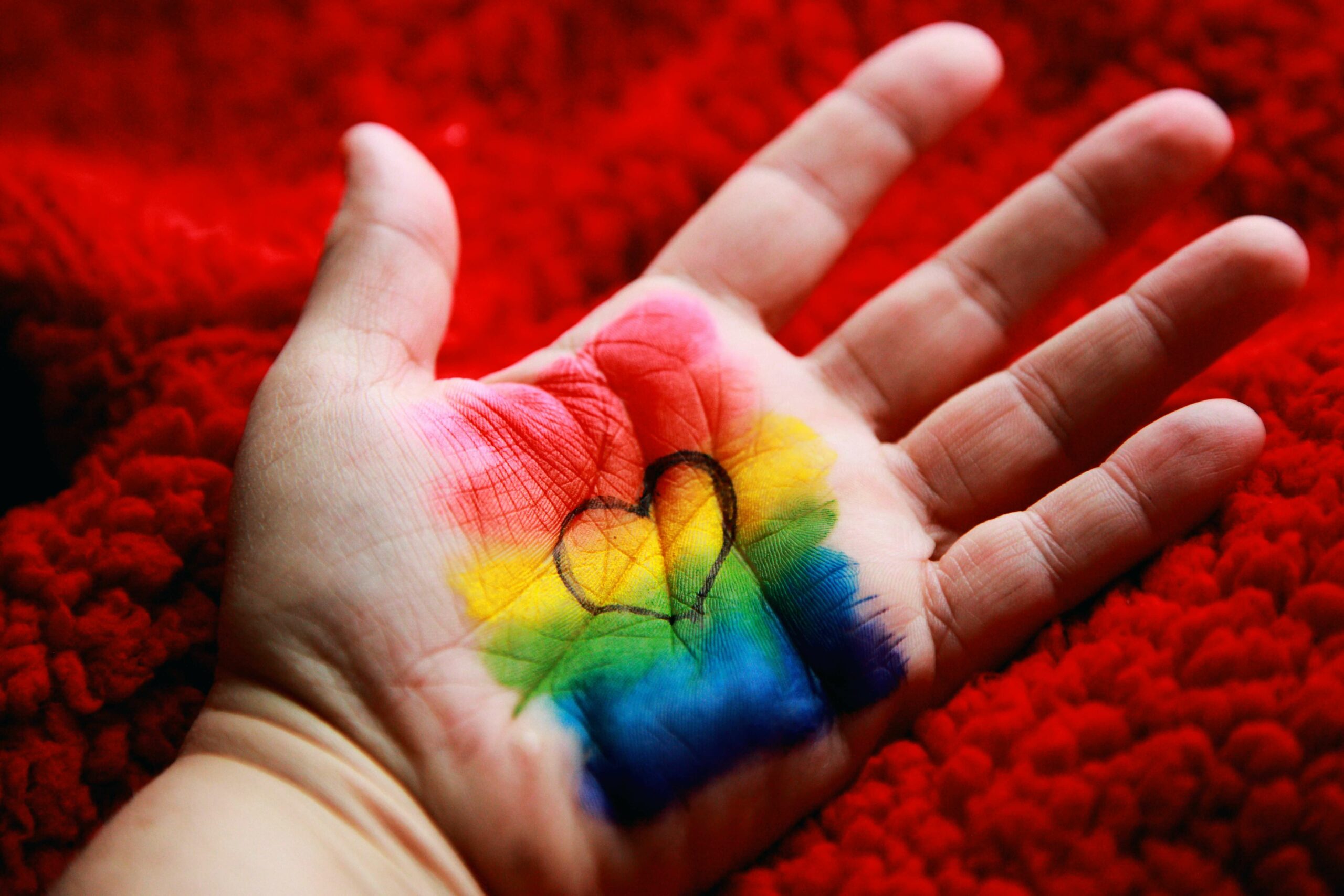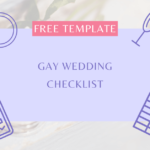Since it wasn’t legal for gay people to get married in the United States until 2015, LGBTQ couples have been creating their own traditions and rituals.
Many gay wedding traditions and rituals stem from heterosexual wedding traditions, but with a twist.
Gay wedding traditions also highlight the LGBTQ community and the value of marriage equality, as these couples have been oppressed for so long.
Check out ten beautiful and meaningful gay wedding rituals and traditions.
10 Gay Wedding Traditions and Rituals
1. Unity Ceremony
Because gay weddings have only recently been allowed, many couples like to perform a unity ceremony to express their love and devotion to one another. Many of these unity rituals also occur at male and female weddings, but they’re especially popular at LGBTQ weddings.
You can let these ideas inspire you and do something slightly different, or use one of these lovely ideas to highlight your commitment to one another.
Sand Mixing
One of the most popular unity ceremonies done at gay weddings is the sand mixing unity ceremony. For this ritual, each partner has a bag or jar of one colored sand. At the same time, they each pour their sand out into a new jar together.
As they pour, the sands mix, and the officiant usually recites a passage about two becoming one. The two colored grains of sand can make for a beautiful combination, and the couple often shakes the jar to completely homogenize the sand, signifying their unity.
Couples often keep the jar of sand to remember their wedding and the vows they made to each other, as the sand cannot separate once mixed.
Melting Candles
This unity ritual is similar to sand mixing but is a much slower and more beautiful process. At the beginning of the ceremony, each partner lights a tall candle. The two candles are different colors and sit in the same bowl or plate.
Depending on how tall the candles are, the wax will melt and mix by the end of the ceremony or reception. This signifies how the two have joined as one, as the wax can never separate. Many couples will keep the melted wax as a beautiful memento from their wedding.
Handfasting
Handfasting is a common wedding ritual in many cultures, including Celtic, Wiccan, and Pagan. In this ritual, the marrying couple joins hands, and the officiant wraps a ribbon or rope around their hands to signify they’re joining together in marriage.
The officiant usually recites readings on love and commitment as they wrap the couple’s hands. LGBTQ couples will often use a rainbow ribbon to highlight the significance of the marriage, something that wasn’t permitted until recently.
2. Ring Warming
A ring warming is a unique wedding ritual, and it’s also done at male and female weddings. The wedding rings are given to the guests at the beginning of the ceremony.
They pass them around and whisper their wishes, prayers, and goodwill for the couple into the rings. When the rings make it back to the couple, they’re filled with love and support from the people who mean the most to the couple.
The ring warming ritual is immensely powerful and moving for LGBTQ couples who may have faced adversity for loving each other.
3. Jumping the Broom
This ritual has a long history, but gay couples are bringing it back. At the end of the ceremony, as they leave, they jump over a broom together, holding hands. This jump represents the couple sweeping the past away to start a new life together.
The meaning behind jumping over the broom can be especially meaningful to LGBTQ couples who have traveled a long and hard road to be able to get married.
The broom has decorations added by friends and family and signed with love, making it a wonderful keepsake from the wedding for the couple.
4. Walking Down the Aisle Together
Traditionally, the bride walks down the aisle, escorted by her father, who gives her away to her soon-to-be husband. While this tradition can be beautiful and sweet, it’s rather outdated.
What if there are two brides? What if there is no bride? What if the father isn’t around?
A common occurrence at LGBT weddings is for the couple to walk down the aisle together. After all, you don’t need anyone’s permission to get married except your partner. So why not take the journey down the aisle together toward this beautiful and mutual decision to unite?
Many lesbian couples will hold hands and walk down the aisle together. The bride’s big reveal during the ceremony is an exciting point for everyone, so both partners should enjoy this magical moment.
On the other hand, some gay couples choose to both stand up at the altar together, skipping the dramatic aisle walk.
5. Colorful Attire
LGBTQ weddings are often very colorful affairs, with bright and bold colors in the decor and everyone’s attire. Some LGBTQ brides will even wear rainbow wedding dresses. But the couple getting married are not the only ones who wear colorful clothing.
Many LGBTQ couples encourage their guests to do away with subtlety and wear the boldest colors they can. While black and white will always be a classy look, many gay weddings embrace the rainbow and encourage everyone to do the same.
6. LGBTQ+ Wedding Rings
Many LGBTQ couples choose wedding rings that represent the gay community. For example, some get rings with rainbow-colored gems, or there may be one of the LGBTQ flags on the ring.
Couples will get creative and design their rings that are beautiful while representing LGBTQ culture and celebrating how far acceptance has come while still acknowledging how much farther there is to go.
LGBTQ wedding rings often differ from traditional wedding rings because the couple won’t buy standard male or female rings, often opting for more androgynous designs that are unisex.
7. White Knots
Many gay weddings will have decor and themes relating to white knots. For those who don’t know, white knots became a symbol of marriage equality when people were campaigning for gay marriage to be legal.
While rainbows are beautiful, some LGBTQ couples want a more subtle and simple wedding theme. The white knot allows them to keep the colors plain while still representing and appreciating LGBTQ culture and acknowledging the strength it took to reach this point.
Men may wear white knots in place of a pocket square or boutonniere. Women may incorporate white knots into their wedding dress or veil. The white knots can also be part of the centerpieces, floral arrangements, and decoration on the cake.
8. Rainbow Wedding Party
Rainbow colors and patterns are a massive and powerful symbol of the LGBTQ community. Many gay couples have rainbow-colored attire for their wedding party.
This style often means one person wears red, another wears orange, someone else wears yellow, and so on to complete the rainbow.
Some bridal parties follow the rainbow pattern in a pronounced and bold way, with whole-colored suits. Other people may have ties or flowers that use rainbow colors for a more subtle representation of the LGBTQ community.
9. Mixed Wedding Party
While many heterosexual couples do this nowadays, it’s more common in LGBTQ weddings. So the bridal party and groomsmen can be a mix of men and women.
Another common occurrence in gay weddings is that rather than a bridal party and groomsmen, just one big wedding party, and they all stand behind the couple during the ceremony.
People typically don’t have all male or all female friends, so there’s no reason to restrict your wedding party based on gender.
The people who stand next to you should be the most important and supportive. So don’t stress trying to fill your wedding party with the traditional genders. Choose the people who mean the most to you so you can be surrounded by those you love on your special day.
10. More Casual
Casual here doesn’t necessarily apply to the attire. Traditional weddings between a man and a woman tend to follow strict traditions and rules.
For example, the bride and groom have designated sides of the altar; the bride walks down the aisle given away by her father, the couple can’t see each other before the wedding, etc.
But LGBTQ weddings don’t have to fit the mold since they’re already breaking it. Many gay weddings have no dress code, encouraging people to wear whatever they want so everyone can feel comfortable and have a wonderful time at the wedding.
The order of events is often switched up, depending on the couple’s preference. The couple may also toss a bouquet to anyone, rather than just the single ladies.
Overall, gay weddings have loads of potential because they don’t have to conform to expected traditions that many male and female couples feel pressured to do.
When planning a gay wedding, keep yourself open to new ideas, and don’t be afraid to tailor the ceremony and reception to your desires, even if they stray far from traditional wedding rituals.



